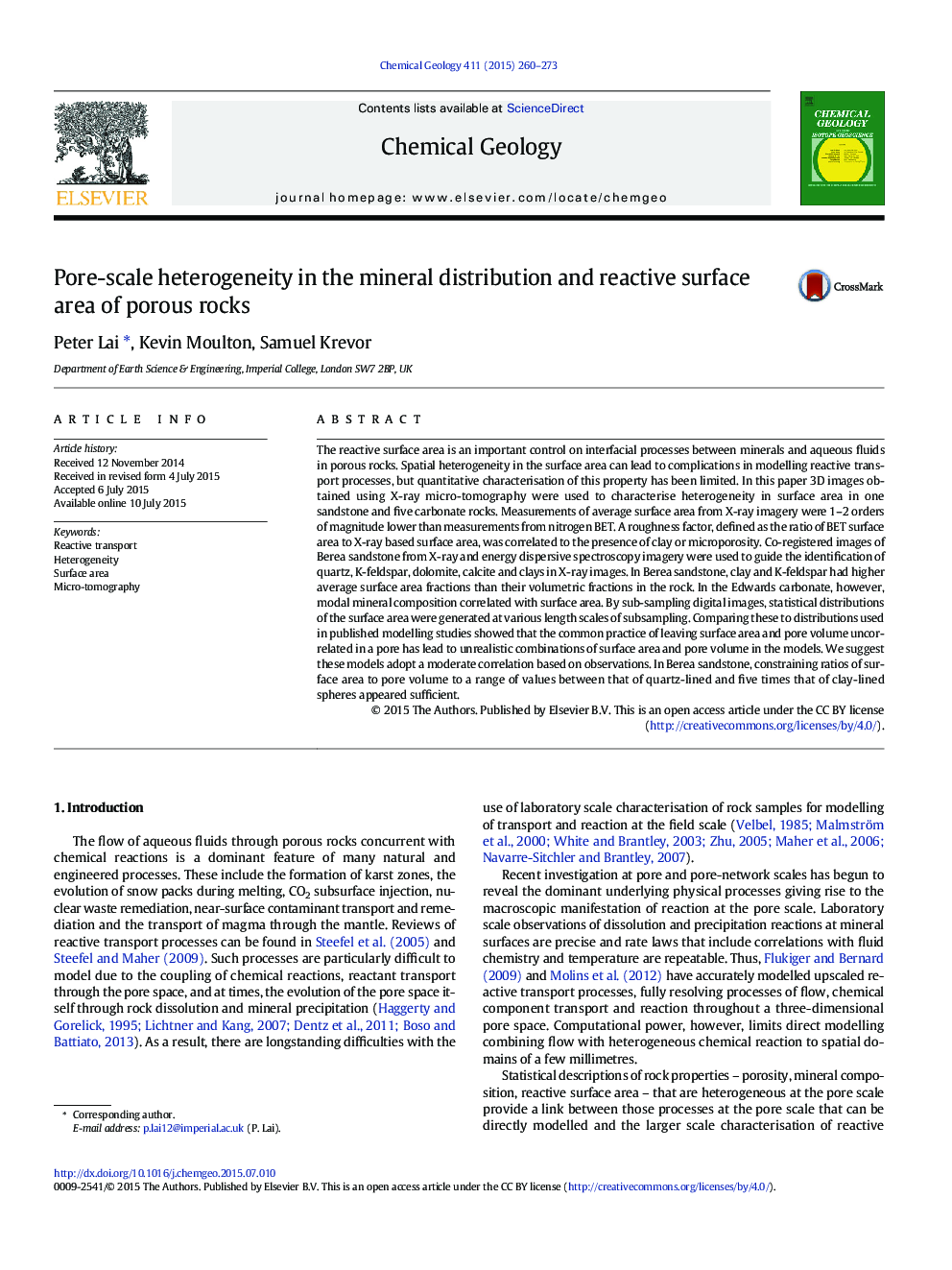| کد مقاله | کد نشریه | سال انتشار | مقاله انگلیسی | نسخه تمام متن |
|---|---|---|---|---|
| 6436349 | 1637563 | 2015 | 14 صفحه PDF | دانلود رایگان |
- X-ray micro-tomography was used to characterise heterogeneity in surface area.
- In sandstone, clay and feldspar had higher surface area fractions than volumetric fractions.
- In a dolomitic rock, modal mineral composition correlated with surface area.
- It is important to constrain surface area-to-pore volume in pore network models.
- In sandstone, the constraint was between quartz-lined spheres and 5Â Ã of claylined.
The reactive surface area is an important control on interfacial processes between minerals and aqueous fluids in porous rocks. Spatial heterogeneity in the surface area can lead to complications in modelling reactive transport processes, but quantitative characterisation of this property has been limited. In this paper 3D images obtained using X-ray micro-tomography were used to characterise heterogeneity in surface area in one sandstone and five carbonate rocks. Measurements of average surface area from X-ray imagery were 1-2 orders of magnitude lower than measurements from nitrogen BET. A roughness factor, defined as the ratio of BET surface area to X-ray based surface area, was correlated to the presence of clay or microporosity. Co-registered images of Berea sandstone from X-ray and energy dispersive spectroscopy imagery were used to guide the identification of quartz, K-feldspar, dolomite, calcite and clays in X-ray images. In Berea sandstone, clay and K-feldspar had higher average surface area fractions than their volumetric fractions in the rock. In the Edwards carbonate, however, modal mineral composition correlated with surface area. By sub-sampling digital images, statistical distributions of the surface area were generated at various length scales of subsampling. Comparing these to distributions used in published modelling studies showed that the common practice of leaving surface area and pore volume uncorrelated in a pore has lead to unrealistic combinations of surface area and pore volume in the models. We suggest these models adopt a moderate correlation based on observations. In Berea sandstone, constraining ratios of surface area to pore volume to a range of values between that of quartz-lined and five times that of clay-lined spheres appeared sufficient.
Journal: Chemical Geology - Volume 411, 14 September 2015, Pages 260-273
